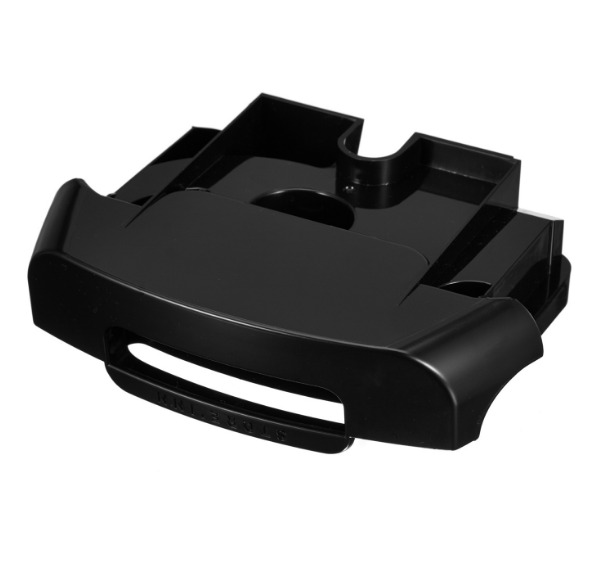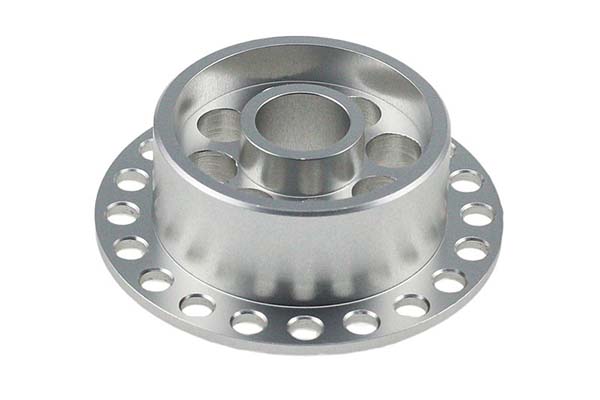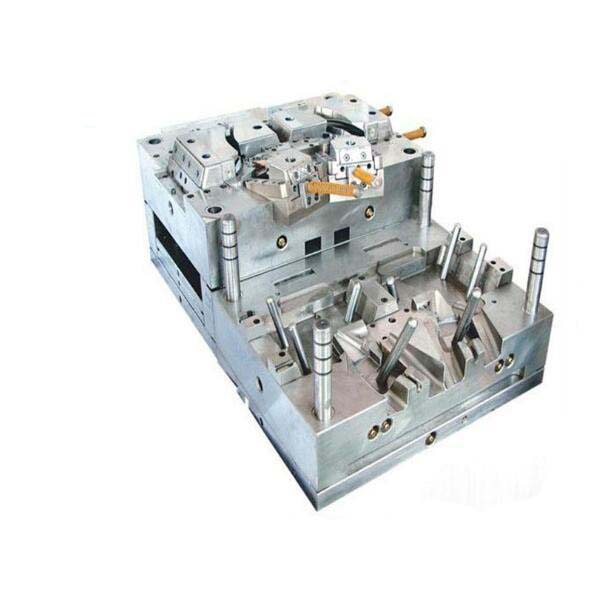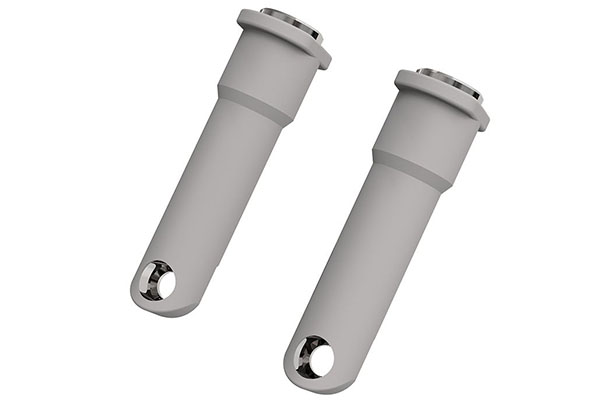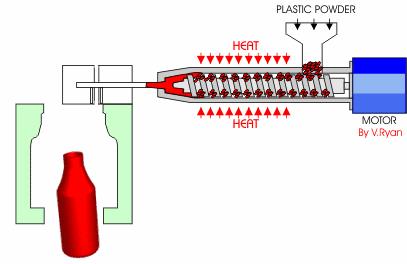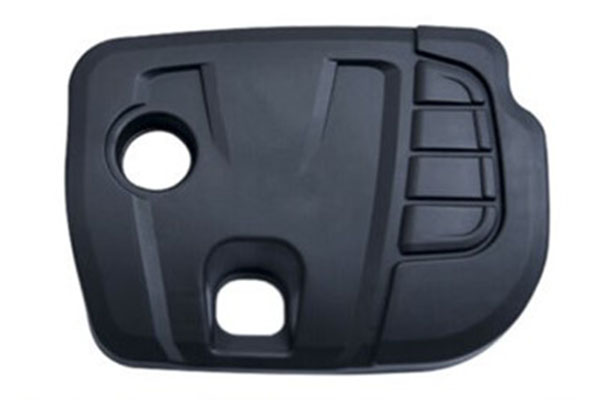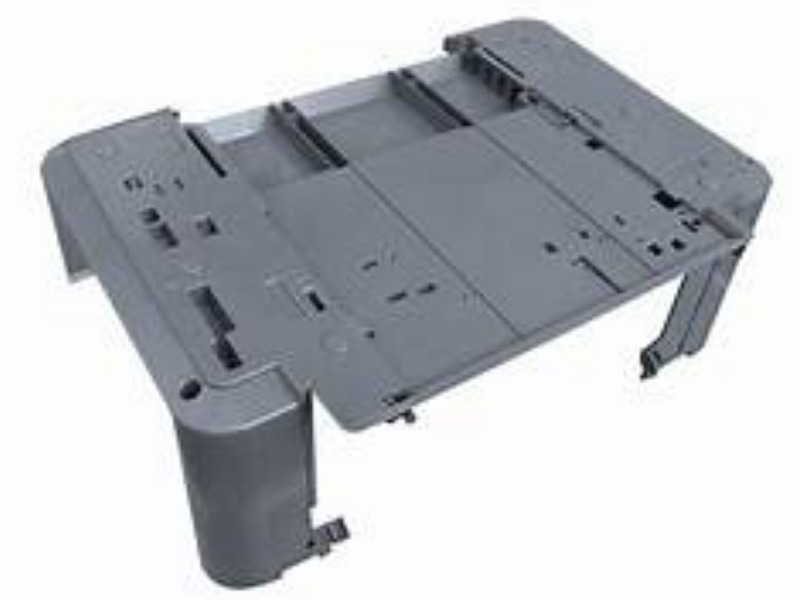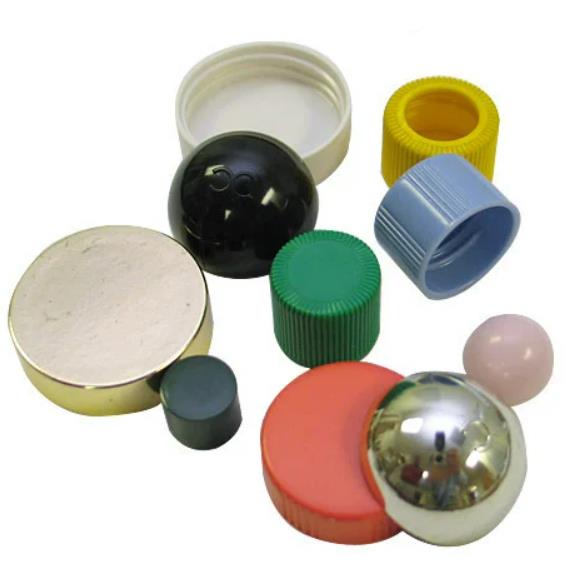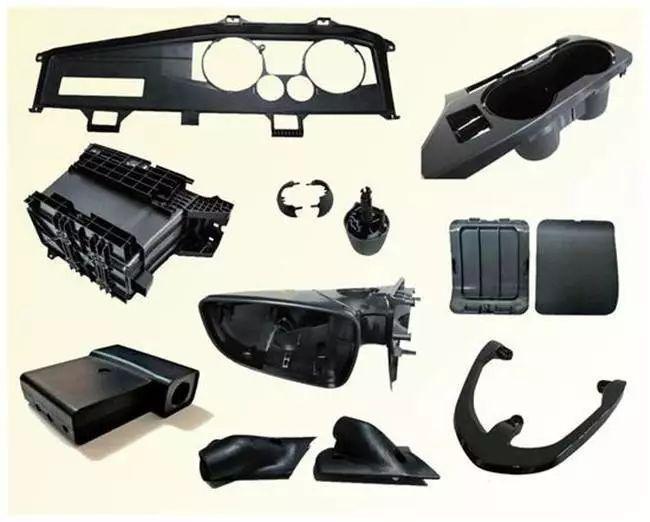Introduction
What are Injection Moulding Die Clamps?
Injection moulding die clamps, also known as mould locks or die fasteners, are essential components in the injection moulding process. They are mechanical devices designed to firmly hold the mould halves together during the injection of molten plastic into the mould cavity. These clamps play a crucial role in ensuring the integrity and stability of the mould, allowing for the production of high - quality plastic parts with precise dimensions.
Typically made from high - strength metals such as steel, injection moulding die clamps come in various shapes and sizes to accommodate different mould designs and injection moulding machines. They are engineered to withstand the high pressures generated during the injection process, which can range from several hundred to several thousand pounds per square inch (PSI). For example, in a medium - sized injection moulding operation for automotive parts, the die clamps may need to endure pressures of around 1000 - 1500 PSI.
Types of Injection Moulding Die Clamps
Mechanical Die Clamps
Mechanical die clamps are one of the most basic types used in injection moulding. They operate through mechanical structures such as bolts and nuts. For example, in a simple injection moulding setup for small - scale plastic toy production, the mould halves are fastened together using large - sized bolts. These bolts are tightened by nuts, creating a clamping force that holds the mould in place during the injection process.
Advantages:
- Simple Structure: Their design is straightforward, making them easy to understand and maintain. For instance, a maintenance technician with basic mechanical knowledge can easily disassemble and reassemble a mechanical die clamp for inspection or repair.
- Low Cost: They generally require fewer components compared to other types, resulting in lower manufacturing and acquisition costs. This makes them an attractive option for small - to - medium - sized injection moulding businesses with limited budgets.
Disadvantages:
- Limited Clamping Force: The clamping force generated by mechanical die clamps is restricted by the strength of the bolts and the torque that can be applied. In high - pressure injection moulding processes, such as those used for manufacturing large - scale industrial plastic parts, the clamping force of mechanical die clamps may not be sufficient to prevent the mould from separating slightly, leading to product defects.
Hydraulic Die Clamps
Hydraulic die clamps utilize a hydraulic system to generate a powerful clamping force. Inside the hydraulic system, a pump pressurizes hydraulic fluid, which is then directed to cylinders. The pressure of the hydraulic fluid acts on pistons within the cylinders, and these pistons apply the clamping force to the mould. For example, in a large - scale automotive injection moulding facility, hydraulic die clamps are used to hold massive moulds in place during the production of car bumpers.
Advantages:
- High Clamping Force: They can produce a significantly higher clamping force compared to mechanical die clamps. This makes them suitable for high - pressure injection moulding operations where large amounts of molten plastic are injected into the mould cavity. For example, in the production of thick - walled plastic pipes, hydraulic die clamps can ensure that the mould remains tightly closed under the high injection pressures.
- Fast Response Time: Hydraulic systems can quickly adjust the clamping force, allowing for rapid changes in the injection moulding process. This results in shorter cycle times and increased production efficiency. When switching between different product designs or production runs with varying requirements, the quick response of hydraulic die clamps enables the injection moulding machine to adapt promptly.
Disadvantages:
- High Maintenance Costs: Hydraulic systems require regular maintenance to ensure the proper functioning of components such as pumps, valves, and cylinders. The hydraulic fluid also needs to be checked and replaced periodically. Any leakage in the hydraulic lines can lead to a loss of clamping force and potential production stoppages, and repairing such leaks can be time - consuming and costly.
Comparison Table of Different Types
| Comparison Items | Mechanical Die Clamps | Hydraulic Die Clamps |
| Clamping Force | Limited, usually suitable for low - to - medium pressure applications | High, capable of handling high - pressure injection moulding processes |
| Cost | Low initial cost, but may require frequent replacement of worn - out bolts and nuts | High initial investment due to the complexity of the hydraulic system, including pumps, valves, and cylinders |
| Response Speed | Slow to adjust clamping force as it involves manual tightening or loosening of bolts | Fast, can adjust the clamping force rapidly through the hydraulic system |
| Maintenance Difficulty | Relatively easy to maintain, only basic mechanical skills are required | High maintenance requirements, need specialized knowledge to handle hydraulic system issues |
Factors to Consider When Choosing
Clamping Force Requirements
Determining the appropriate clamping force is crucial when selecting injection moulding die clamps. This force must be sufficient to keep the mould halves tightly closed during the injection of molten plastic.
Based on Mould Size: Larger moulds generally require higher clamping forces. For example, if you have a mould with a large projected area, say a mould for manufacturing large - scale plastic storage bins with a projection area of 1 square meter, it will need a much greater clamping force compared to a small - scale mould for making plastic buttons. The relationship between the projected area of the mould and the required clamping force is direct; as the area increases, the force needed to keep the mould closed also increases.
Material - Dependent: Different plastic materials have varying viscosities and injection pressures. For instance, highly viscous engineering plastics like polycarbonate (PC) require higher injection pressures. When using PC, the die clamps need to provide a clamping force that can counteract the high - pressure injection. A commonly used formula to estimate the clamping force \(F\) is \(F = P\times A\), where \(P\) is the cavity pressure and \(A\) is the projected area of the product in the mould. The cavity pressure \(P\) can be determined based on the plastic material. For example, for general - purpose plastics like polyethylene (PE), the cavity pressure is relatively lower, around 30 - 50 MPa, while for PC, it can be in the range of 80 - 120 MPa.
Shape Complexity: Products with complex shapes, such as those with deep cavities or thin - walled sections, may require additional clamping force to ensure that the mould remains closed during the injection process. Consider a plastic automotive interior component with intricate designs and multiple undercuts. The molten plastic will exert uneven pressures on the mould during injection, and the die clamps must be able to handle these dynamic forces to prevent any movement or separation of the mould halves.
Compatibility with Moulds and Machines
Ensuring compatibility between the die clamps, moulds, and injection moulding machines is essential for a smooth production process.
Installation Dimensions: The die clamps must have the correct mounting holes and dimensions to fit the mould accurately. For example, if the mould has mounting holes that are spaced 200 mm apart, the die clamps should have corresponding holes at the same distance. Mismatched installation dimensions can lead to difficulties in mounting the clamps and may cause misalignment of the mould during the injection process.
Interface Types: Different injection moulding machines and moulds may have various interface types. Some machines may use a hydraulic interface for die clamps, while others may have a mechanical - based connection. It is crucial to ensure that the die clamps' interface is compatible with the machine's interface. For instance, if an injection moulding machine has a specific type of hydraulic coupling for die clamps, the chosen die clamps must have a matching hydraulic connector. Using an incompatible interface can result in leakage (in the case of hydraulic systems) or improper attachment, leading to safety hazards and production disruptions.
Mould Thickness and Machine Capacity: The die clamps should be able to accommodate the thickness of the mould. Injection moulding machines have a specified range of mould thicknesses they can handle. If the mould is too thick or too thin for the machine's capabilities, even the best - fitting die clamps may not function properly. For example, a machine with a maximum mould thickness capacity of 300 mm cannot be used with a mould that is 400 mm thick, regardless of the die clamps used.
Cost - Benefit Analysis
When choosing injection moulding die clamps, it is important to conduct a cost - benefit analysis.
Purchase Cost: Mechanical die clamps are generally more affordable upfront. They can cost anywhere from a few hundred to a few thousand dollars, depending on their size and quality. Hydraulic die clamps, on the other hand, are more expensive due to their complex hydraulic systems. A set of high - quality hydraulic die clamps for a medium - sized injection moulding machine can cost upwards of $10,000.
Operating Costs: Mechanical die clamps have relatively low operating costs. They do not require additional energy sources other than the manual effort to tighten or loosen the bolts. Hydraulic die clamps, however, consume energy to operate the hydraulic pumps. Over time, the energy consumption can add up significantly. For example, in a high - volume production facility that operates 24/7, the monthly electricity bill for running the hydraulic systems of the die clamps can be in the hundreds or even thousands of dollars.
Maintenance Costs: Mechanical die clamps are relatively easy to maintain. Basic maintenance tasks such as checking for loose bolts and replacing worn - out nuts can be done by in - house technicians with minimal training. The cost of replacement parts for mechanical die clamps is also relatively low. Hydraulic die clamps, in contrast, have high maintenance requirements. Regular maintenance includes checking for hydraulic fluid leaks, replacing filters, and servicing the pumps and valves. The cost of hydraulic fluid, filters, and potential repairs can be substantial. A single repair of a hydraulic pump can cost \(1,000 - \)3,000, depending on the severity of the issue.
Production Benefits: Hydraulic die clamps, despite their high costs, can offer significant production benefits. Their high clamping force and fast response times can lead to higher - quality products and increased production efficiency. In a production line where the cost of a defective product is high, such as in the production of medical devices, the use of hydraulic die clamps can save costs in the long run by reducing the number of defective products. On the other hand, if the production volume is low and the product quality requirements are not extremely high, mechanical die clamps may be a more cost - effective choice.
Yigu Technology's Perspective
As a custom supplier of non - standard plastic and metal products, Yigu Technology has in - depth experience in the use and manufacturing of injection moulding die clamps. We understand that precision and efficiency are the cornerstones of high - quality production.
Our team of experts is proficient in selecting the most suitable die clamps for different projects. Whether it's a small - scale production run with unique mould designs or a large - scale operation requiring high - speed production, we can provide tailored solutions. For example, in a recent project involving the production of complex plastic components for the electronics industry, we carefully evaluated the clamping force requirements, mould compatibility, and cost - effectiveness. By choosing the right hydraulic die clamps, we were able to ensure the precision of the components while significantly reducing the production cycle time.
Yigu Technology also focuses on continuous innovation in die clamp technology. We invest in research and development to improve the performance of die clamps, such as enhancing the clamping force stability and reducing the maintenance needs. Our advanced manufacturing facilities and strict quality control processes enable us to produce die clamps that meet the highest industry standards. We are committed to providing our customers with not only high - quality die clamps but also comprehensive technical support and after - sales service, ensuring a smooth injection moulding process from start to finish.
FAQ
What is the most suitable type of die clamp for small - scale production?
For small - scale production, mechanical die clamps are often the most suitable. They have a simple structure, which means they are easy to operate and maintain, even for those with limited technical expertise. Their low cost is also a significant advantage, as small - scale producers may have budget constraints. These die clamps can meet the basic clamping requirements in small - scale operations, such as producing small plastic components for handicrafts or small - batch prototypes. Although they have limited clamping force, it is usually sufficient for the relatively low - pressure injection moulding processes common in small - scale production.
How often should injection moulding die clamps be maintained?
The maintenance frequency of injection moulding die clamps depends on their usage frequency. If the die clamps are used frequently in a high - volume production environment, it is advisable to conduct a basic inspection at least once a week. This includes checking for any signs of wear, loose components, or reduced clamping force. For die clamps in general use, a monthly maintenance routine is recommended. Regular maintenance is crucial as it can prevent sudden failures during production, reduce the risk of product defects caused by improper clamping, and extend the lifespan of the die clamps.
Can I use a hydraulic die clamp on an old - model injection machine?
Using a hydraulic die clamp on an old - model injection machine can be challenging. First, there may be compatibility issues in terms of the machine's interface. Old - model machines may not have the appropriate hydraulic connections or ports to accommodate the hydraulic die clamp. Additionally, the power and pressure - generating capacity of the old - model machine may not be sufficient to drive the hydraulic system of the die clamp effectively. However, with some modifications and careful assessment of the machine's capabilities, it may be possible. For example, an adapter could be installed to connect the hydraulic die clamp to the machine's existing hydraulic lines, and the machine's hydraulic pump may need to be upgraded to provide the necessary pressure for the die clamp to function properly.
